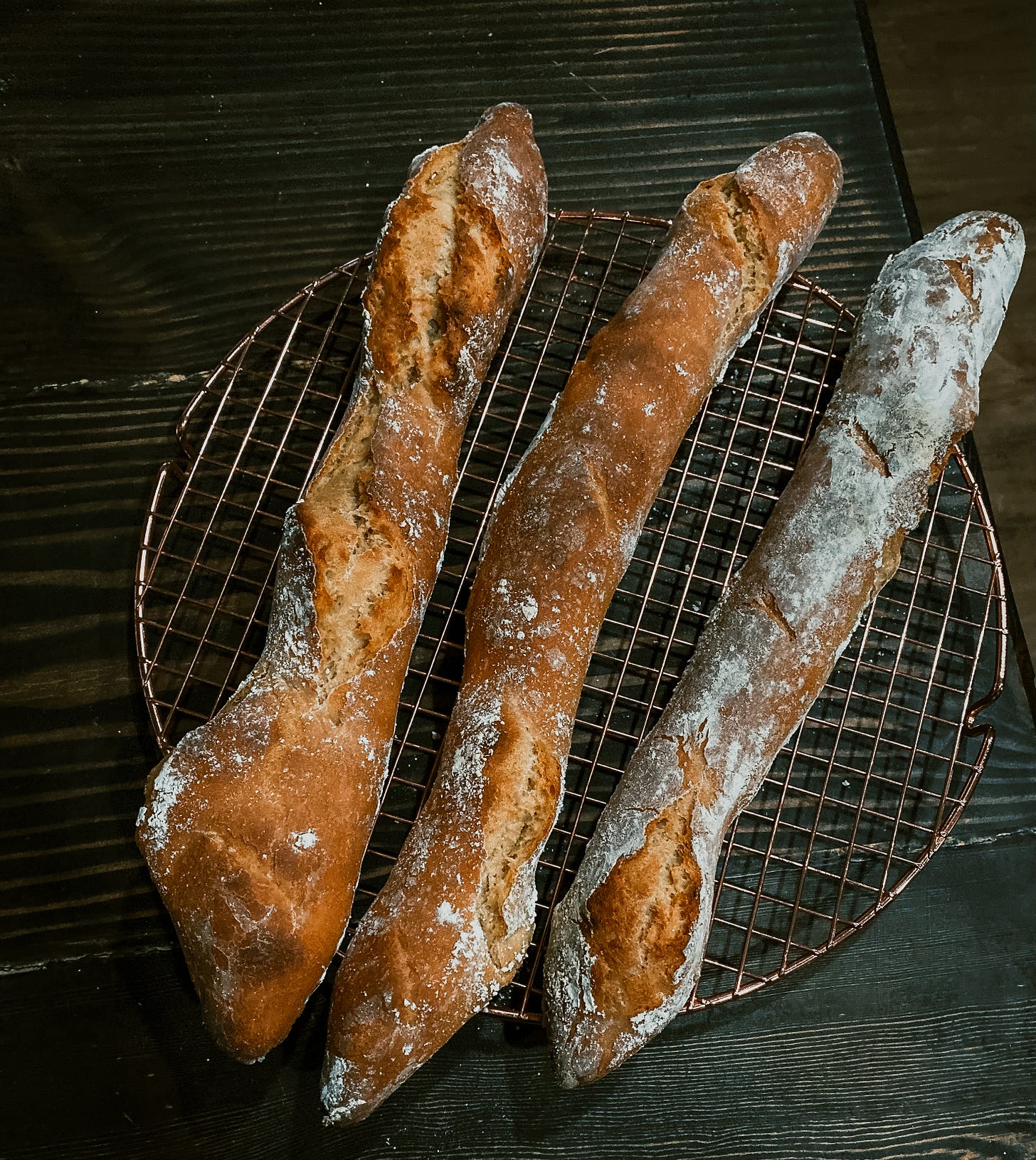I remember sitting in the backseat of my parents’ Lincoln Town Car as a little girl, driving home from Arthur Avenue in the Bronx. If you’re not familiar with Arthur Avenue, it’s a small yet still rather vibrant Italian enclave, shrunk as most such enclaves have down to a block or so of shops and restaurants. The one remarkable aspect of Arthur Avenue, however, is it remains a place that genuine Italians (like my parents) drive to and buy bread, cheese, sopressata, fish in preparation for Christmas Eve, and other authentic Italian food items.
Growing up, trips to Arthur Ave were a routine part of life. I can recall, from the vantage point of waist-high to adults, the surrounding bustle of the market, my parents talking to the men behind the counters in Italian, white butcher paper wrapped packages of sliced, cured meats being passed around at breakneck speed. I remember bundles of dried hot peppers that looked so beautiful to me, I once convinced my father to let me take one home, although I was not yet a cook in those days.
All the delicacies of Italy were on display in the market—jars of vegetables, cans of soda, packaged croissants with marmalade; items I only saw when we were in Italy, but here, in the Bronx, they could be purchased. The freshly baked loaves of bread were piled high in the bakery—round loaves, oval loaves, loaves with pepper and onion inside, whole wheat, white, semolina, seeded, non-seeded, the options felt endless. The owners of the bakery we frequented called my mother “signora”; buon giorno, signora, le cose come vanno? And the proprietor would ask about this person or that person, or how things were going upstate. It was not the neighborhood bakery, but then again, it was.
All of this was wonderful, of course, but what I remember most is the ride home. My mother would draw a white bag out from among the many bags of fresh bread we’d purchased (she froze the loaves, and we’d defrost as needed for reliable table bread). Out would come the rolls of soft bread. Then the package of mortadella just sliced in the market, and last but most certainly not least, the fresh, milky mozzarella.
As my father drove, she assembled us each a sandwich. She handed my father his, and reached back to hand me mine. It was so simple. Three ingredients—bread, mozzarella, and mortadella—but they were each fresh and together transcendent. Those little panini filled us with happiness. They fit perfectly between our hands, so convenient for a car ride; a small, rustic bounty. We ate, talking to each other, joyful, watching the city peel away as we made our way back home.
What I’m getting at is this—bread has always been a really big part of my life.
As a child and teenager, I often woke to the smell of fresh bread baking downstairs. Or I’d return home to see loaves of it cooling on the counter, covered by a tablecloth. My mother’s bread, even now, is different than the bread we bought on Arthur Avenue, and in my opinion, better. She always makes loaves in a bread pan, her crust is dark, although not very crunchy, and the center is moist and spongy. What a treat it proved to cut into one of those loaves, still hot from the oven. We’d open a can of anchovies and lay some on top of a slice, for, yet again, a simple yet rewarding feast.
Then somewhere in my 20s, I became health conscious, and we all know these days the first thing to go when you eat healthy is bread. Cut out the carbs. Cut out the flour. So I did, for many years. And I’m not going to lie, those years were a wee bit sad. Life is simply not as fun without bread, and without all the marvelous creations flour can produce. More so, a huge part of my cultural identity and experience was missing without it. As the comedian Sebastian Maniscalco says: “Listen, I'm Italian. As soon as I sit at a table, I gotta have bread within 15 seconds of sitting down, alright?”
It’s an axiom that bread is life, and what we’ve done to bread—refined it, added processed sugar, fast-acting yeast, stripped the wheat it’s made with of nutrients in a quest for speed of production—points to what we’ve done to life, which is reduced its principal mission to quick and easy. Down the line, however, when we have to deal with the illnesses such food leads to, things are not so easy.
So I passed through a lackluster stretch where I watched others eat bread and abstained, wondering how I was going to live life this way.
And then, one glorious day, I stumbled upon the answer:





